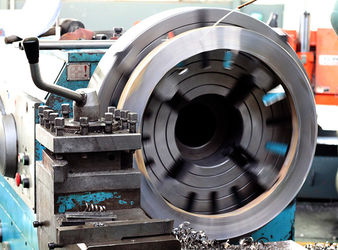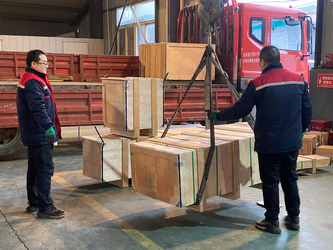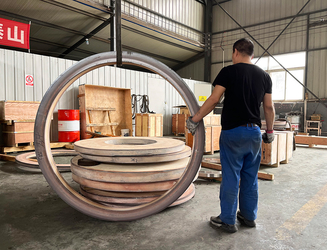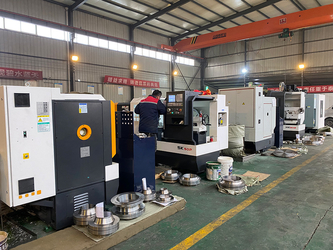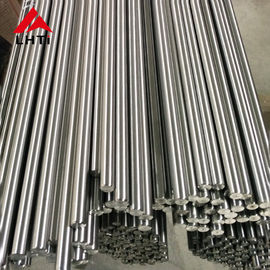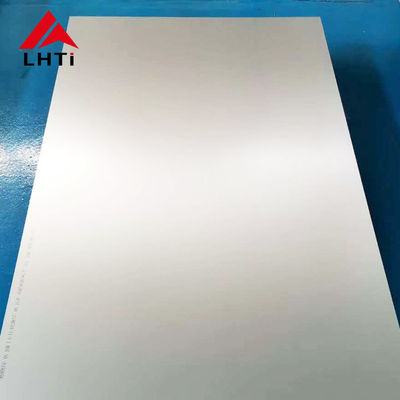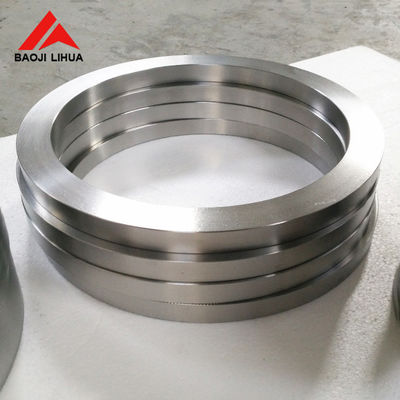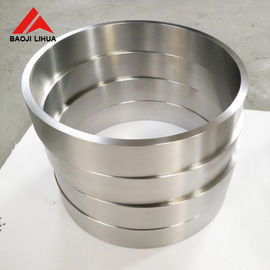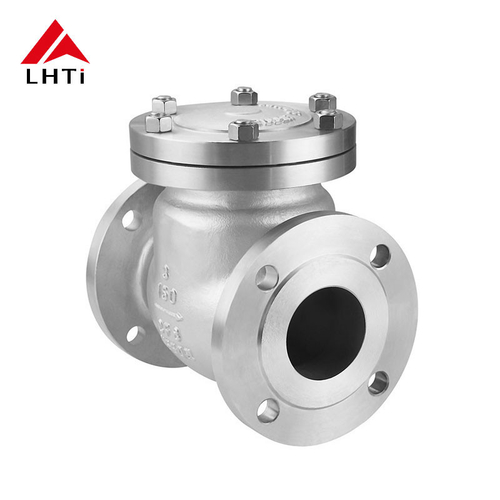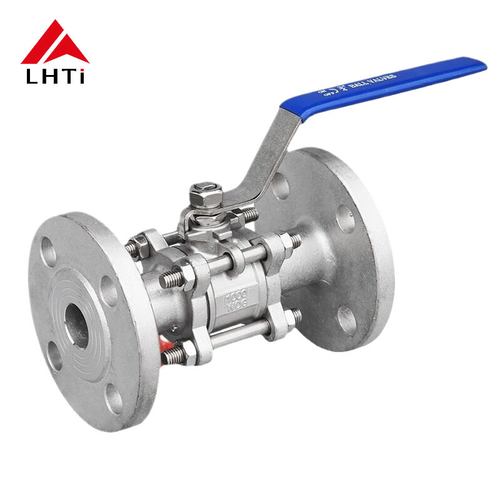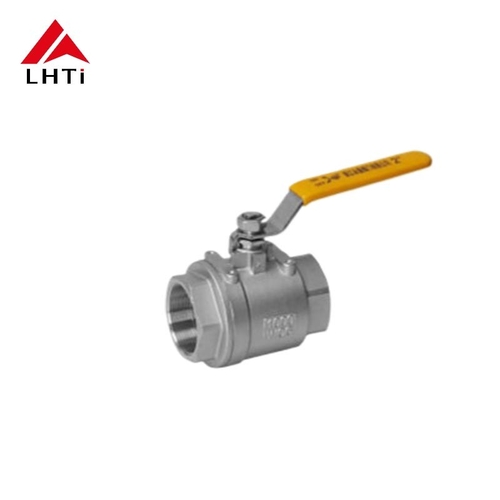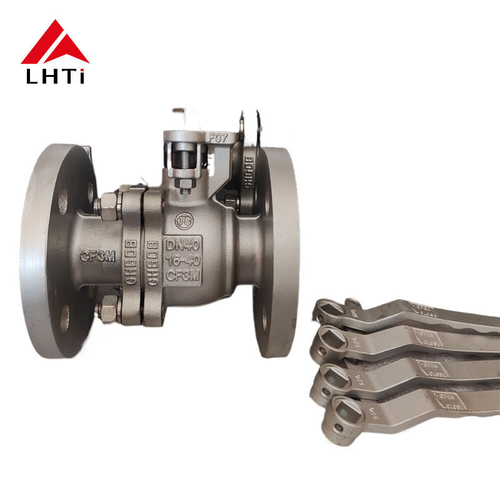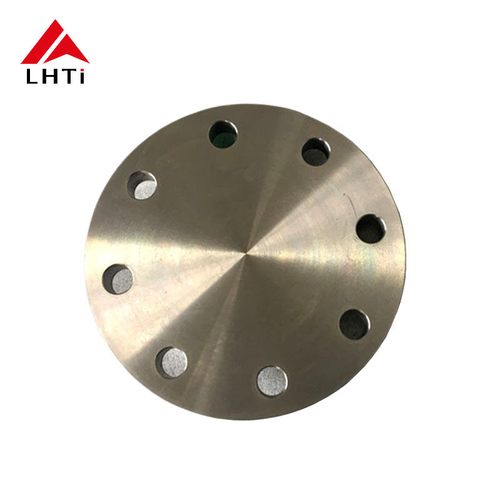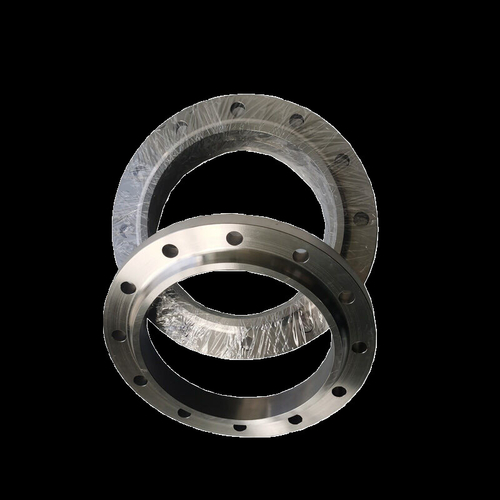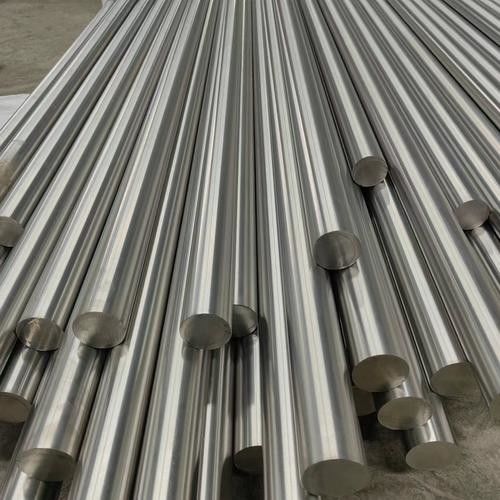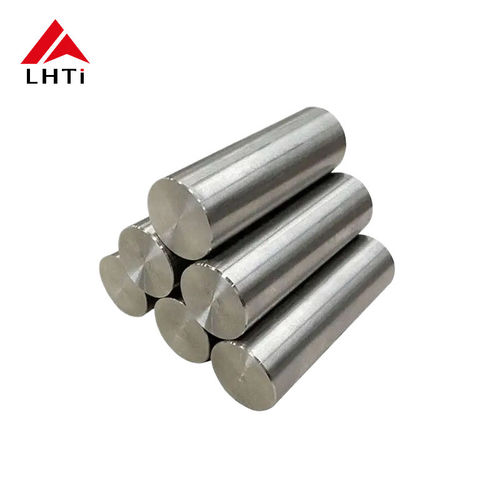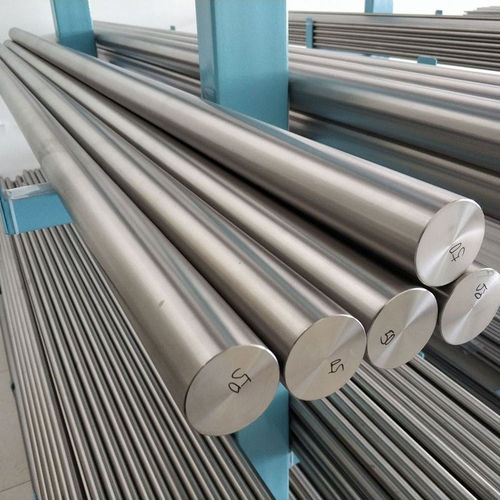Titanium (Ti), known for its robust properties and wide-ranging applications, stands as the 9th most abundant element in the Earth's crust and the 4th among metallic elements. Symbolized by "Ti" and occupying the 22nd spot on the Periodic Table with an atomic weight of 47.90, titanium is predominantly sourced from rutile and ilmenite found in beach sands, primarily mined in Australia and South Africa.
The production process begins with rutile combined with coke or tar and chlorine gas, heated to yield titanium tetrachloride (TiCl4). This compound undergoes chemical conversion into a sponge-like material, subsequently melted into ingot form using either Vacuum Arc Remelting (VAR) or a cold hearth furnace. Alloyed grades include added alloying agents during compaction. The resulting ingots are processed into various mill products using standard metalworking equipment.
Titanium's metallurgical characteristics make it indispensable across diverse sectors, including aerospace, defense, industrial and chemical processing, medical applications, naval and marine industries, sporting equipment, and consumer goods. Initially pivotal in military aerospace for its superior structural qualities and strength-to-density ratio, titanium's density ranges from 0.160 lb/in³ to 0.175 lb/in³, varying by grade.
Key to titanium's appeal is its natural formation of a ceramic-like oxide film upon exposure to oxygen, imparting exceptional corrosion and erosion resistance. This self-healing oxide layer mitigates scratches when in contact with oxygen.
Biocompatible, titanium finds extensive use in medical implants such as hip and knee replacements, pacemaker cases, dental implants, and craniofacial plates. Its nonmagnetic properties, ability to maintain strength at high temperatures, high melting point, excellent strength-to-weight ratio, corrosion resistance in diverse oxidizing environments (including brackish and saltwater), and low modulus of elasticity further underscore its versatility.
In conclusion, titanium's blend of durability, resilience, and adaptability cements its status as an essential material across various industries, promising continued innovation and application in the future.
In the midst of rapid technological progress and burgeoning new industries, the titanium sector is witnessing unprecedented opportunities for advancement. Recent strides in domestic high-purity titanium production signal a broadening application landscape and expanding market potential for titanium materials.
Renowned for its lightweight nature, high strength, and exceptional corrosion resistance, high-purity titanium holds immense promise across aviation, aerospace, automotive, and chemical industries. Historically, global high-purity titanium production has been dominated by a handful of foreign firms, leaving China reliant on costly imports and stifling industry growth.
Breaking this dependency has been a focal point for domestic titanium enterprises, driving substantial investments into research and development to refine production technologies. These efforts have yielded a series of breakthroughs in high-purity titanium production, establishing a robust foundation for China's titanium industry.
China now boasts a comprehensive industrial chain for high-purity titanium, encompassing raw materials to finished products. Furthermore, domestic enterprises are actively exploring new applications, propelling the widespread adoption of titanium materials in sectors such as semiconductors, aerospace, renewable energy, and healthcare.
Looking ahead, the titanium industry anticipates sustained momentum in its development trajectory. Continued technological advancements and the emergence of novel industries promise to broaden the application scope and market opportunities for titanium materials. Concurrently, ongoing investments in research and development by domestic enterprises will drive further innovation and industrial upgrading, catalyzing the sustainable growth of the titanium sector.
Coating and Firing: For different applications, titanium anodes are meticulously prepared using alcohol solutions mixed with halides such as Ru, Ir, Sn, Ti, Pd, Ta, Co, and Ni. The process involves multiple layers of coating, followed by drying and repeated oxidation and firing. Stringent quality inspections ensure each anode meets exacting standards before leaving the factory.
Surface Treatment of Titanium Substrate: Initially, the titanium substrate undergoes sandblasting to increase its surface area, enhancing adhesion between the substrate and the coating. This is followed by immersion in a solution of 10% to 15% alkali or washing powder to remove oil residues. Subsequent treatment involves boiling in 10% to 15% oxalic acid to etch the surface, further optimizing the bonding strength.
Historical Evolution of Titanium Anodes: The development of titanium anodes traces back to China's pioneering research in metal anode batteries starting in 1972. By the mid-1980s, the introduction of titanium-based DSA (Dimensionally Stable Anode) marked a significant advancement, replacing graphite anodes in the chlor-alkali industry worldwide. This transition not only boosted energy efficiency but also reduced maintenance costs and enhanced productivity. By 1996, China emerged as a global leader in caustic soda production, largely driven by the widespread adoption of metal anode cells, which accounted for over 80% of the country's total output.
Diversified Applications: Beyond chlor-alkali production, titanium anodes have found extensive use in water treatment, metal foil preparation, chlorate production, electroplating, cathodic protection, and seawater decontamination. These applications underscore titanium's versatility, durability, and significant environmental benefits compared to traditional materials.
The ongoing research and development efforts continue to expand the applications of titanium anodes, reflecting their pivotal role in advancing modern electrochemical technologies globally.
3D printing, a revolutionary form of rapid prototyping technology, continues to evolve, enabling the direct manufacturing of complex objects from digital models. Originally employed in mold-making and industrial design, this technology is now transforming various sectors with its efficiency and versatility.
Technology Overview:
Three-Dimensional Design: The process begins with modeling using computer-aided design (CAD) or animation software. Models are segmented into layers and saved in STL format, utilizing triangular surfaces to simulate object geometry. PLY or VRML/WRL formats, generated from 3D scanning, facilitate full-color printing.
Printing Process: Printers fabricate objects by sequentially layering liquid, powder, or sheet materials, bonding them through various methods. This method accommodates almost any shape and structure.
Resolution and Thickness: Printers achieve section thickness (Z-direction) and plane resolution (X-Y direction) in microns or DPI. Typical layers are 100 microns thick, with advanced models printing as thin as 16 microns. X-Y resolution rivals laser printers, with "ink drops" typically 50 to 100 microns in diameter.
Advantages Over Traditional Methods: 3D printing offers distinct advantages over conventional manufacturing techniques like injection molding. It facilitates rapid, flexible, and cost-effective production, particularly suitable for smaller batches. Designers and development teams utilize desktop-sized printers to expedite prototype creation.
As 3D printing technology continues to advance, its impact on manufacturing processes grows exponentially. From rapid prototyping to direct manufacturing, its ability to produce intricate designs swiftly and economically underscores its transformative potential across industries.
Achieving flawless welds in titanium alloys demands a meticulous approach, combining protective measures and precise welding techniques. Titanium alloys are exceptionally sensitive to atmospheric contaminants, necessitating the use of inert gases such as argon throughout the welding process. Employing gas shielding via a nozzle to envelop the arc area and outfitting the welding torch with a protective shield ensure an environment free of harmful gases, maintaining temperatures below 200 degrees Celsius.
Managing heat dissipation is critical due to titanium's low thermal conductivity, which can otherwise lead to undesirable grain coarsening in both the weld and the heat-affected zone (HAZ). Effective strategies include the application of thermally conductive copper pressure plates on either side of the weld and the circulation of cooling water over these plates to efficiently dissipate excess heat.
Selecting appropriate welding methods and materials is paramount. Matching the composition of welding wires to that of the base metal is essential, as is optimizing joint strength to align with toughness requirements. Tungsten arc welding proves effective for thicker titanium alloy plates, while plasma arc welding necessitates a shielding gas mixture of argon and hydrogen to prevent hydrogen embrittlement risks.
Thorough preparation is equally crucial. The welding area must undergo rigorous cleaning to eliminate oxide films, grease, moisture, and dust. Proper adjustment of welding equipment gas pressures ensures an adequate supply during operations. The choice of welding materials is tailored to specific techniques and technical demands, ensuring compatibility and performance.
In summary, successful welding of titanium alloys hinges on a comprehensive approach encompassing meticulous welding protection, effective heat dissipation techniques, careful selection of materials and methods, and meticulous preparation. These practices collectively safeguard against welding defects and ensure the integrity of titanium alloy structures.
Titanium is a challenging material to cut due to its high strength, low thermal conductivity, and reactivity at high temperatures. Several methods are employed in industrial settings to cut titanium effectively:
Laser Cutting: Laser cutting is widely used for titanium due to its precision and ability to cut complex shapes. A high-energy laser beam is focused on the material, heating it rapidly to melt or vaporize the titanium. This process requires inert gases like nitrogen or argon to prevent oxidation and maintain cut quality.
Water Jet Cutting: Water jet cutting utilizes a high-pressure stream of water mixed with an abrasive material (such as garnet) to cut through titanium. This method is advantageous for its ability to produce clean cuts without heat-affected zones.
Abrasive Water Jet Cutting: Similar to water jet cutting but with the addition of abrasives like garnet to enhance cutting efficiency, especially for thicker titanium plates.
Plasma Cutting: Plasma cutting involves ionizing gas to create a plasma arc, which then melts the titanium and blows away molten metal from the cut. This method is suitable for cutting thicker titanium sections.
Considerations for Cutting Titanium:
Cooling and Heat Management: Titanium has low thermal conductivity, so managing heat buildup is crucial to avoid altering its properties and causing deformations.
Gas Selection: Inert gases like argon or nitrogen are preferred during laser cutting to prevent oxidation. This ensures the cut edges remain clean and free from contamination.
Cutting Speed and Quality: Adjusting cutting parameters such as speed and power density is essential to achieve precise cuts without compromising material integrity.
Post-Cutting Handling: Titanium tends to form an oxide layer when exposed to air. Proper handling post-cutting, such as cleaning or protective coatings, helps maintain the material's properties.
Each cutting method offers unique advantages depending on the specific requirements of the project, such as thickness of the material, desired edge quality, and production volume. Choosing the right method involves considering these factors to achieve optimal results when working with titanium.
Adjusting laser cutting parameters is crucial for achieving optimal results, especially when working with materials like titanium. Here's a detailed explanation of how various parameters impact the process:
Firstly, Polarization: This determines the efficiency of laser light conversion. Typically around 90%, polarization ensures high-quality cutting. Adjusting polarization optimizes energy efficiency and cutting speed.
Secondly, Focus Diameter: This influences the width of the kerf, which is adjusted by changing the focal length of the focusing mirror. A smaller focus diameter allows for finer cuts and improved precision.
Next, Focus Position: This determines the spot size and power density on the workpiece surface. Proper focus positioning ensures optimal energy absorption and efficient material removal, affecting the shape and quality of cut edges.
Lastly, Laser Power: Critical for materials like titanium, laser power must be tailored to the material type and thickness. Higher power increases the power density on the workpiece, exceeding the material's processing threshold for effective cutting. Adjusting laser power is essential for achieving desired cutting speeds and quality.
Considerations for titanium cutting also include material thickness, gas type and pressure (to prevent oxidation), cutting speed, and the choice of assist gases. Optimizing these parameters ensures efficient titanium cutting, maintaining precision and minimizing post-processing needs. It's essential to adjust parameters based on project requirements and material properties to achieve the best cutting results.
In recent research developments, medical titanium alloys have seen significant progress across several critical areas, reflecting promising advancements for healthcare applications.
1. 3D Printing Technology Revolutionizes Customization: 3D printing of titanium-based biomaterials has emerged as a game-changer in healthcare. This technology enables the creation of intricate structures tailored to individual patient requirements. Its benefits include unparalleled customization, reduced manufacturing cycles, and cost-effectiveness. However, challenges persist in optimizing parameters to balance porous bone growth and mechanical integrity.
2. Innovations in Surface Modification Technology: Surface modification plays a pivotal role in enhancing the performance of medical titanium alloys. Techniques such as physical vapor deposition, plasma spraying, ion implantation, laser cladding, and sol-gel synthesis have been extensively researched. These methods aim to improve biocompatibility, wear resistance, and antibacterial properties, overcoming inherent challenges posed by passivation films on titanium surfaces.
3. Advancing Metastable β-Titanium Alloys: Metastable β-type titanium alloys are at the forefront due to their lower elastic modulus and exceptional biocompatibility. Integration of elements like Nb, Mo, Ta, Zr, and Sn has enabled these alloys to achieve superior properties. Current research focuses on further reducing elastic modulus, enhancing strength, fatigue resistance, and exploring novel functional characteristics. Additionally, efforts are directed towards understanding alloying interactions, optimizing composition designs, and controlling microstructural properties.
These advancements underscore the dynamic evolution of medical titanium alloys, promising transformative impacts in orthopedics, dentistry, cardiovascular treatments, and beyond. The ongoing research aims to harness these innovations to improve patient outcomes and advance medical device technologies globally.
5 Things You Didn’t Know About Titanium
#1. It's superior in strength
Titanium has the highest strength-weight ratios of all structural metals, For example it would take twice as much aluminum to produce the same strength seen in a titanium structure. While other metals like steel are also extremely strong, it weighs about 45% more than it's titanium counterpart. It's lightweight-high strength ratio is what makes it the preferred choice for high-stress applications.
#2. Titanium has an extremely high melting point
Titanium has a very high melting point, meaning that it won't liquify until it's reached 3,034 degrees Fahrenheit. In comparison, aluminum reaches its melting point at only 1,221 degrees Fahrenheit. Despite having this high melting point, it still does not surpass that of tungsten.
#3. It's the 9th most abundant element in earth's crust
Despite titanium being the 9th most abundant element in earth's crust, it's still one of the most expensive industrial metals. It's high cost is a result of two things, first due to the high cost of extracting titanium from its ore, and second because the processing that must be done generates large amounts of expensive waste.
#4. It's one of the youngest structural metals
Titanium was not even identified as an element until the 1700's, unlike iron which has been dated back to 3200 BC. In 1937 an inventor by the name of Dr. Wilhelm J. Kroll developed the process that would prove the metal could be commercially produced. It then took an additional 11 years of process development before the first commercial titanium sheet was produced.
#5. Titanium sparks white when being cut with a waterjet
During the cutting process titanium gives off brilliant white sparks that differ greatly from the yellow sparks you often see when cutting other metals. These blinding white sparks occur because titanium is a non-ferrous metal, meaning it does not contain a significant amount of iron.
At Intelligent Cutting solutions we most often see titanium projects come our way from the aerospace industry, although it has no shortage of applications. Although we gave you our top 5 fun facts about titanium, there's plenty more to learn. To learn more about titanium visit our metals & alloy page, where we go in-depth about the defining characteristics of some of the most common metals we cut!
Why do titanium screws break their heads?
The phenomenon of titanium screw head breakage, while relatively uncommon due to titanium's well-known strength and durability, can indeed occur under certain circumstances. The reasons behind such occurrences are multifaceted, and understanding them is crucial for both manufacturers and users to prevent future incidents. Here is an expanded explanation of the potential causes and corresponding solutions for broken heads in titanium screws:
Groove Depth Issue: When a groove trace is evident at the site of the broken head, it indicates that the manufacturing defect is likely the root cause. The groove in a screw serves as the channel for the screwdriver to engage and turn the screw. However, if this groove is too deep, it can significantly weaken the structural integrity of the screw head. The excessive depth creates a stress concentration point that, when subjected to force, can result in the head breaking off. To rectify this, manufacturers must closely monitor and adjust the depth of the grooves during the production process. Reducing the depth of the groove within specified design tolerances can help to distribute the force more evenly across the head of the screw, thus preventing breakage.
Torque Application: In instances where no groove trace is present, the issue might be related to the application of torque during installation. Every type of fastener, including titanium screws, has a specified torque value that should not be exceeded. This value is determined based on the material properties, thread design, and the intended application of the screw. When the applied torque surpasses this threshold, it can lead to metal fatigue and eventual breakage. Users must be aware of the correct torque specifications for the titanium screws they are working with and use appropriate tools, such as torque wrenches, to ensure that they do not exceed these limits. By controlling the twisting force and adhering to the recommended torque values, the risk of head breakage can be minimized.
Other Contributing Factors: While groove depth and torque are primary factors, other elements can also contribute to the breakage of titanium screw heads:
Material Defects: Impurities or inclusions in the titanium alloy can lead to weak spots in the screw structure.
Design Flaws: An improperly designed screw head may not distribute forces evenly, leading to stress concentrations.
Surface Conditions: Corrosion or other surface damage can compromise the strength of the screw head.
Installation Technique: The method of installation, including the angle and stability of the tool used, can affect the force distribution on the screw head.
Preventive Measures: To prevent head breakage in titanium screws, it is essential to:
Ensure that manufacturing processes adhere strictly to design specifications, including groove depth and overall screw dimensions.
Educate users on the correct torque values and the importance of using proper tools for installation.
Implement quality control measures to detect material defects and design issues early in the production process.
Provide clear instructions for the correct use and handling of titanium screws to avoid installation errors.
By addressing these factors, manufacturers and users can significantly reduce the likelihood of encountering broken heads in titanium screws, ensuring both the efficacy and longevity of the fasteners in various applications.




